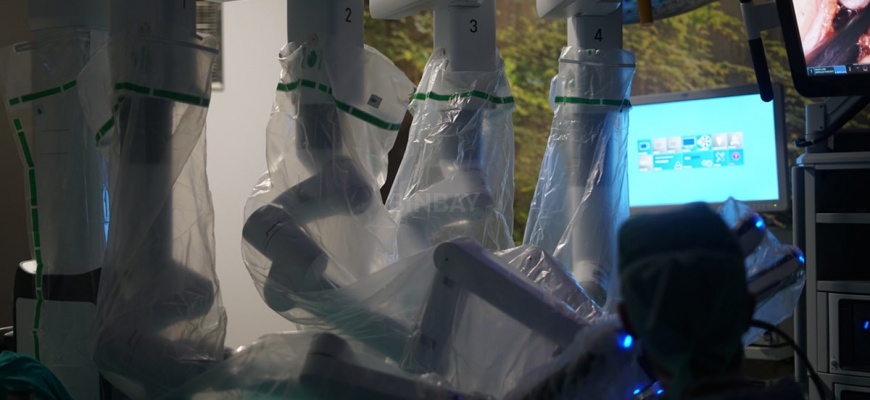
Robotic surgery for prostate cancer is the most successful surgical procedure preferred in the treatment of prostate cancer. This surgical procedure shortens the treatment and recovery time of patients.
The surgical procedure performed to treat prostate cancer is called radical prostatectomy. Radical prostatectomy is intended to remove cancerous prostate tissues from the body.
Laparoscopic Prostate Cancer Surgery
Transurethral resection of the prostate, also known as laparoscopic prostate surgery (TUR), is one of the most common and oldest surgical procedures performed in cancer treatment. Today, it is still performed in many clinics, depending on the preferences of the surgeon and the physical conditions of the hospital.
This procedure is performed in two ways as using a scalpel to remove prostate tissue or using an electro-resection device called ‘resectoscope’, which is equipped with an electric wire loop to remove tissue (”standard” procedure).
Endoscopic prostate surgery is a procedure performed by accessing the prostate area through the penis. With the help of a camera, the image of the area being operated is transmitted to the monitor. The operation is followed on the monitor. This time, the parts blocking the way are removed in pieces.
How is Robotic Prostate Cancer Surgery (Robotic Radical Prostatectomy) Performed?
Prostate cancer surgeries are performed with the help of a robot. The robot use to perform surgeries has 4 arms. A camera that enables surgeons to take 3D images is attached to one of these 4 arms. Surgical instruments such as scissors are attached to the remaining 3 arms, which enable the surgeon to perform the surgical procedure.
For prostate cancer surgery, 4 incisions of 8 to12 millimeters are made in the navel region of the patient. Robotic cameras and surgical instruments are sent through these holes. Thus, the cancerous tissue of the prostate is removed. The bladder and urinary canal are reconnected to each other with the help of the robot.
Facts You Need to Know Before Robotic Prostate Cancer Surgery
The day before the surgery, in the afternoon, we admit you to a single room reserved in your name. When you are hospitalized, our anesthesiologist reviews your test results and determines whether you need postoperative intensive care.
Before the surgery, you will be given drugs and your intestines will be cleaned so that you will not be stressed. You will not be allowed to eat or drink anything after 12 pm.
What are the Advantages of Robotic Surgery?
Less bleeding: During robotic prostate cancer surgery, the patient's abdomen is inflated with gas. The gas pressure in the inflated abdomen reduces bleeding.
Less pain: Since the procedure does not involve a long incision, patients do not have postoperative pain and return to their daily lives in a very short time.
Urinary incontinence: Robotic surgery causes much less postoperative urinary incontinence than other methods (5%), and enables patients to regain their urinary continence earlier.
Duration of carrying a urinary catheter: Since the urinary tract is better connected to the urinary bladder, the urinary catheter is removed within 5-6 days after robotic radical prostatectomy.
Sex life: Compared to other procedures, robotic surgery is the best for preserving erection functions. Thus, the patient returns to sexual life in a shorter time.
Better Diagnosis of Cancer Cells: The 3D imaging system of robotic surgery enables surgeons to view cancerous cells much more clearly.
Postoperative Period of Robotic Prostate Surgery
Since it would not be appropriate to eat or drink anything until the next day, patients are fed intravenously with serum. The day after surgery, the patient is prompted to walk to start the gastric and intestinal movements. Thus, the patient can also start taking nourishment orally.
They can gradually switch to solid foods by initially consuming liquid foods. After the surgery, rubber-like material called a drain placed in the patient's abdomen allows for the discharge of the accumulated fluids in the abdomen.
This material is removed 2 or 3 days after surgery, depending on the recovery condition of the patient. The duration of this healing process is approximately 1 week, after which the patient is discharged.
What will the Patient Experience after Surgery?
We usually take our patients to our intensive care unit immediately after surgery and follow them there for about 6-8 hours. Then we take the patient to his single room in the service. After coming to the patient’s room, the patient starts taking nourishment orally.
If the bowel sounds of the patient can be heard on the morning of the 1st postoperative day, the patient begins to consume fluid foods. If the patient has pain, painkillers are administered (usually not required). We ask patients not to walk around as much as possible.
Patients usually switch to normal eating on that day. On the 2nd postoperative day, the drain of the patient is removed and he is discharged if there are no complications.







